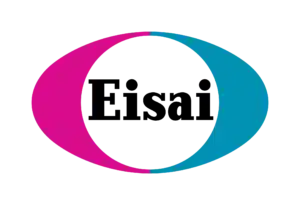Use of Radioactive Iodine
Clinical Outline
= Primers in Thyroidology
= Journal Club Presentation
= Case-based Discussion (inc. roundtables)
= Grand Rounds Lectureship
Management Recommendations
1. Pre-RAI Considerations
ATA
A. Baseline Testing
Patients receiving RAI should have baseline full blood count and kidney function tests performed given renal impairment significantly reduces RAI excretion and the potential adverse effect on the bone marrow from RAI.1
B. RAI Timing Following CT Scans with Contrast
A delay of 6 weeks should be instituted prior to the use of RAI in order to help to ensure iodine clearance.1
2. Preparation for RAI Treatment
ATA // ESMO // JAES // NCCN
A. Low Iodine Diet
A Low Iodine Diet is recommended for 1–2 weeks for patients undergoing RAI remnant ablation, adjuvant treatment or treatment of known disease.1–3
Urinary iodine measurement outside of a research setting for suspected iodine contamination may not be necessary.1,2
Supplemental Educational Content
Low-Iodine Diet of 4 Days Is Sufficient Preparation for I-131 Therapy in Differentiated Thyroid Cancer Patients
Presenter: Anouk van der Horst-Schrivers, MD & Bernadette DekkeR, PhD
Summary
No consensus exists about the optimal duration of the low-iodine diet (LID) in the preparation of I-131 therapy in differentiated thyroid cancer (DTC) patients. This work aimed to investigate if a LID of 4 days is enough to achieve adequate iodine depletion in preparation for I-131 therapy. In addition, the nutritional status of the LID was evaluated.
- 12:37 Lessons Learned from Low Iodine Diet
Dr. Anouk van der Horst-Schrivers discusses the importance of increased water intake and decreased milk (with iodine) intake to improve LID ease for patients. - 29:29 Iodine Health Facts
Dr. James Hennessey reviews iodine facts such that 30 countries are known to be iodine deficient and 10 countries are known to be in iodine excess. - 39:56 No Association of UIC & Outcomes in I-131 Preparation
Dr. Hennessey reviews a study by Tala Jury et al. that found no association of UIC and outcomes in I-131 preparation.
B. Thyroid Hormone Withdrawal
If thyroid hormone withdrawal is planned prior to RAI, levothyroxine should be withdrawn for 3–4 weeks. Liothyronine (LT3) may be substituted for levothyroxine in the initial weeks if levothyroxine is withdrawn for 4 or more weeks. However, liothyronine should be withdrawn for at least 2 weeks prior to administering RAI. The TSH should be measured prior to I131 administration and should be greater than 30 mIU/L.
C. Recombinant Human TSH Preparation
Recombinant Human TSH Preparation can be used as an alternative to thyroxine withdrawal for remnant ablation or adjuvant treatment in patients with ATA low risk or intermediate risk disease or patients with significant comorbid conditions that may preclude thyroid hormone withdrawal. In ATA high risk patients, thyroid hormone withdrawal is preferred.1–4
If recombinant TSH (rhTSH) is utilized in patients with metastatic disease, the dose to metastatic foci may be lower than following thyroid hormone withdrawal and so an equivalent or greater administered activity of RAI should be given.1–4
Corticosteroid therapy should be considered when brain, spinal canal, or superior vena caval deposits are present to reduce the risk of acute swelling which could result in compression of these vital organs.1–4
3. Pregnancy & Breastfeeding
ATA // JAES // NCCN
A. Pregnancy
Women of child bearing potential receiving RAI therapy should have a negative screening for pregnancy prior to RAI and avoid pregnancy for at least 6 months after I131 therapy.1–3
B. Breastfeeding
Breastfeeding should cease about 3 months prior to RAI being administered. A diagnostic I123 or low dose I131 scan to exclude breast uptake prior to RAI therapy should be considered.1,2
4. Postoperative Disease Status & RAI Decision Making After Initial Thyroid Surgery
ATA // ESMO // NCCN
A. RAI Imaging After Initial Thyroid Surgery
Pre-treatment RAI scanning can be considered if the findings can potentially alter clinical management. I123 is preferred due to lack of stunning with this agent but cost and availability may limit access. If pre-treatment I131 imaging is to be performed, a low dose scan (1–3 mCi or 40–120 MBq) performed up to 72 hours prior to the therapy dose could be undertaken as higher doses and longer time can increase the risk of stunning, which may reduce the efficacy of the treatment.1,2
B. Postoperative Serum Tg
The post-operative unstimulated Tg reaches a nadir at 3–4 weeks, and measurement at 6–12 weeks can be used to guide RAI therapy decision making.1,2,4
- There is a lack of consensus regarding actionable Tg levels. Some recommendations propose a favourable prognosis if post-operative unstimulated Tg is < 1 ng/ml in the absence of detectable anti-Tg antibodies, and typically recommend RAI for post-operative unstimulated Tg > 5–10 ng/ml.2,4
C. Molecular Marker Status
The role of molecular marker status in post-operative RAI decision making is evolving.
- Some guidelines incorporate BRAFV600E and TERT mutations into risk stratification of PTC, with the combination considered as indicators of high risk of recurrence and appropriate for RAI therapy.4
5. Role of RAI Therapy & Administered Activity
ATA // ESMO // JAES // NCCN
A. Remnant Ablation
30 mCi or 1.1 GBq may be administered in ATA low risk patients to facilitate disease follow up.1
- Some guidelines indicate a range of 30–50 mCi or 1.1–1.8 Gbq.2
- Discordant data from other guidelines do not support the role of remnant ablation, as it has not been shown to reduce rates of recurrence or death.3
B. Adjuvant Treatment
30–150 mCi or 1.1–5.5 GBq may be administered in patients with ATA intermediate risk disease who are more likely to have residual small volume disease.1–4
- RAI may be administered at an activity of 30 mCi, after total thyroidectomy in patients classified as ATA low-risk or intermediate risk disease with lower risk features.1
- Higher administered activities might be considered for patients receiving less than total or near-total thyroidectomies and where larger remnants are suspected or where adjuvant therapy is intended.
C. Treatment of Known Disease
Supplemental Educational Content
Selective Use of Radioactive Therapy for Papillary Thyroid Cancers with Low or Lower-Intermediate Recurrence Risk
Presenter: Giorgio Grani, MD, PhD
Summary
Drs. Giorgio Grani and Livia Lamartina demonstrate the viability of selective, individualized radioiodine treatment in patients with lower-intermediate papillary or differentiated thyroid cancers.
- Dr. Grani discusses the transition of thyroid cancer management from a population-wide to an individual-based approach depending on the patient’s risk level.
- The goal of his study was to identify the effects of this evolved treatment approach on the rates of radioiodine treatment in papillary thyroid cancers, as well as compare the short-term outcomes in terms of current ATA-defined responses to treatment.
- Dr. Grani’s team developed their inclusion criteria based on an internally-derived definition of lower-intermediate risk patients. This allowed them to designate a cohort of individuals that did not need immediate postoperative radioactive iodine (RAI) ablation.
- Compared to a similar cohort of low and lower-intermediate risk patients who had received the “one-size-fits-all” RAI treatment approach, the group that deferred RAI did not significantly differ in response to treatment after three years.
- The key takeaway is that a more selective use of radioiodine does not cause any difference in the rate of structurally incomplete responses to treatment. Additionally, there was no increase in the likelihood of negative outcomes in low-risk of lower-intermediate risk patients.
- Dr. Lamartina elaborated upon Dr. Grani’s presentation with a broader discussion of RAI therapy and the role of postoperative disease status when considering whether patients with low-risk differentiated thyroid cancer (DTC) should receive radioiodine ablation.
- There is currently an active study in France that is randomly assigning lower-intermediate risk DTC patients to either an RAI group or guided follow-up group to compare the success of the two strategies.
Administered activities ranging between 100–200 mCi or 3.7–7.4 GBq should be considered for ATA high-risk patients or those with known metastatic disease.1,2,4
- Whole body and blood clearance dosimetry studies can be used to determine a maximal administered activity to be administered outside of this range, but this is only available at certain high volume specialist centers. The 48-hour whole body dose should not exceed 80 mCi (3.0 GBq) to avoid pulmonary fibrosis in patients with lung metastases and the bone marrow retention should not exceed 120 mCi (4.4 GBq) at 48 hours.1,2
- Empirically administered RAI above 150 mCi or 5.5 GBq may exceed the maximum tolerable tissue dose and should be avoided in patients over 70 years of age.1
For definitions of thyroid cancer risk stratification, please refer to the Initial Risk Stratification Table.
- RAI Treatment of Pulmonary Metastases
Radioactive iodine therapy is strongly recommended for treatment of radioactive iodine avid pulmonary metastases.1–4Most guidelines endorse empiric dosing with administered activities ranging from 100–200 mCi (or 3.7–7.4 GBq) I131 given in repeated doses at 6 to 12-month intervals for 1–2 years provided there is evidence of continued clinical benefit (such as improved symptoms, decreased size of pulmonary nodules, declining serum Tg). Additional therapeutic RAI could be administered based on RAI avidity of the persistent/recurrent pulmonary metastases, disease status, and whether additional RAI therapy is likely to be curative.
1–4 - RAI Treatment of Bone Metastases: Radioactive iodine therapy is recommended for radioactive iodine avid bone metastases as it has been associated with increased survival but is rarely curative.1–4
- The administered activity can be given empirically (100–200 mCi or 3.7–7.4 GBq) or determined by individual dosimetry.1
- Empiric Therapy for Patients with Negative RAI Diagnostic Scans but Elevated Tg Level
Patients may be treated with RAI who have no imaging evidence of disease but biochemical persistence or recurrence as indicated by:
- Tg > 10 ng/mL with thyroxine withdrawal,
- Tg > 5 ng/mL with rhTSH stimulation, or
- Increasing Tg or Tg antibody levels.
An empiric dose of RAI in the range of 100–200 mCi (3.7–7.4 GBq) or a dosimetrically determined dose may be considered. If the post treatment scan is negative, then the patient has RAI refractory disease and further RAI should not be given. In approximately half of patients, the disease site may be localised on the post treatment scan or a decline in Tg occurs.
1,2
- Some guidelines do not support the role of RAI therapy in patients with high Tg and no apparent structural disease.3
- Post-therapy Whole Body Scan (with or without SPECT/CT) is recommended after RAI administration for remnant ablation, adjuvant treatment, or therapy of known disease to aid in disease staging and document the RAI avidity of any structural lesion.1,2,4
Table 9. Remnant Ablation Decision Making
Tumor Description
Tumor ≤ 1 cm
| ATA Risk | Low |
| Disease specific survival improved by RAI | No |
| Disease free survival improved by RAI | No* |
| RAI indicated | No |
Tumor > 1–4 cm
| ATA Risk | Low |
| Disease specific survival improved by RAI | No |
| Disease free survival improved by RAI | Unclear data* |
| RAI indicated | Not routinely |
Tumor > 4 cm
| ATA Risk | Low |
| Disease specific survival improved by RAI | Unclear data* |
| Disease free survival improved by RAI | Unclear data* |
| RAI indicated | Consider |
Micro ETE (Any tumor size)
| ATA Risk | Low / Intermediate |
| Disease specific survival improved by RAI | No |
| Disease free survival improved by RAI | Unclear data* |
| RAI indicated | Consider |
Central LN Mets
| ATA Risk | Low / Intermediate |
| Disease specific survival improved by RAI | No |
| Disease free survival improved by RAI | Unclear data* |
| RAI indicated | Consider |
Lateral or Mediastinal LN Mets
| ATA Risk | Low / Intermediate |
| Disease specific survival improved by RAI | No |
| Disease free survival improved by RAI | Unclear data* |
| RAI indicated | Consider |
Any Size Gross ETE
| ATA Risk | High |
| Disease specific survival improved by RAI | Yes |
| Disease free survival improved by RAI | Yes* |
| RAI indicated | Yes |
Distant Metastasis
| ATA Risk | High |
| Disease specific survival improved by RAI | Yes |
| Disease free survival improved by RAI | Yes* |
| RAI indicated | Yes |
* Conflicting observational data.
The publisher for this copyrighted material is Mary Ann Liebert, Inc. publishers. This table is reprinted and adapted from THYROID.
6. Role of Imaging Techniques In Follow-up
ATA // ESMO // NCCN
A. Diagnostic Whole Body RAI Scans
Routine use of surveillance diagnostic whole-body RAI scanning during follow up is not recommended for low-risk to intermediate-risk patients with no biochemical or structural evidence of persistent/recurrent disease.1,2,4
Diagnostic whole-body scanning may be a useful diagnostic tool in the follow up of patients who meet the following criteria: 1,2,4
- High-risk disease,
- Biochemical or structural evidence of persistent disease, or
- Indeterminate biochemical or structural findings.
SPECT/CT RAI imaging may provide better anatomic localization of RAI avid foci allowing clinicians to better distinguish between metastatic foci and non-specific.1
B. 18F-FDG-PET Scanning
18F-FDG PET scan should be considered in high-risk DTC patients with negative RAI imaging who meet the following criteria:
- Elevated serum Tg (generally > 10 ng/mL),1,4
- Stimulated Tg > 2–5 ng/ml.2
18F-FDG PET may also be considered for:
- Initial staging of poorly differentiated thyroid cancers,
- Widely invasive follicular carcinoma or invasive Hurthle cell cancer particularly if Tg elevated and/or high-risk pathology,1,2,4
- As a prognostic tool in patients with metastatic disease to identify lesions / patients at highest risk of rapid progression and/or mortality,1,4
- Evaluation of post-treatment response following systemic or local therapy of metastatic or locally invasive disease,1 or
- First line isotopic imaging (including optional active surveillance) for patients with RAI refractory advanced/metastatic DTC.4
C. Characteristics of RAI Refractory Disease
The following clinical scenarios provide strong evidence that a patient with structurally identifiable metastatic disease has radioactive iodine refractory differentiated thyroid carcinoma as defined by the following criteria:1,4
- Absence of initial RAI uptake in the malignant/metastatic tissue (i.e. no uptake outside the thyroid bed at first therapeutic WBS),
- Tumour tissue no longer able to concentrate RAI after previous evidence of RAI avid disease,
- RAI uptake in some lesions but not in others, and
- Progression of metastatic disease (as defined by Response Evaluation Criteria in Solid Tumor [RECIST]) despite significant RAI uptake within 6–12 months.
Other guidelines also highlight controversy about additional potential criteria, including presence of high FDG uptake, aggressive histology and persistence of disease after multiple RAI treatment courses.4
This disease designation is dependent upon evidence that the following imaging criteria were met:
- Appropriate TSH stimulation,
- Appropriate iodine preparation,
- Appropriate imaging techniques (including current scanner technology),
- Appropriate iodine [I123, I131 or I124] administered activity and
- Appropriate imaging time after iodine administration.
7. Potential Complications of RAI Treatment
ATA // JAES // NCCN
A. Salivary Gland Damage
Salivary gland damage is a recognised complication of RAI resulting in xerostomia and increased risk of gum disease and dental caries. The higher the individual and cumulative administered activities, the higher the risk.
Potential measures utilised to prevent this damage include hydration, sour candies (especially those containing lemon) starting 24 hours post dose administration, and amifostine and cholinergic agents. All have been utilised in an attempt to reduce the damage but the evidence is insufficient to recommend for or against routine use of these measures.1,3
B. Transient Alterations in Taste
Transient alterations in taste may occur but there are no measures recommended to manage this problem.1,3
C. Fertility
Temporary amenorrhoea for 4–10 months may occur in up to 25% of women but long-term fertility is not affected when low to moderate doses are given. Ovarian damage from RAI may result in menopause occurring about 1 year earlier than the general population.
RAI may cause a temporary reduction in sperm count. Permanent infertility after a single dose of RAI is unlikely but cumulative doses exceeding 400 mCi or 14.8 GBq may affect fertility and sperm banking may need to be considered. Infertility, miscarriages and fetal malformation does not appear to be elevated in the long term in either men or women receiving low to moderate doses of RAI.
Radiation exposure to gonads can be reduced with good hydration, frequent emptying of the bladder and avoiding constipation.1–3
D. Second Malignancies
Most studies have shown a very low risk of secondary malignancies after RAI including leukemia, stomach, colorectal, kidney, bladder and salivary cancers. A risk-benefit analysis should be undertaken when administering RAI.1–3
The absolute risk of developing a secondary malignancy after RAI therapy is exceptionally low.1 Guidelines for specific surveillance for secondary malignancies have not been delineated. Certain guidelines do endorse monitoring for myelosuppression and other potential long-term toxicities in patients that received > 1,000 mCi (37 GBq) cumulative administered activity of I131. Specific guidelines to follow bone marrow function have not been delineated.1–3
Supplemental Educational Content
A Systematic Review and Meta-Analysis of Subsequent Malignant Neoplasm Risk After Radioactive Iodine Treatment of Thyroid Cancer
Presenter: Anna Sawka, MD
Dr. Anna Sawka presents the article entitled, “A Systematic Review and Meta-Analysis of Subsequent Malignant Neoplasm Risk after Radioactive Iodine Treatment of Thyroid Cancer.” Dr. David Pattison joins as a featured guest discussant and offers a nuclear medicine perspective on the topic.
- Dr. Sawka discusses six factors to consider in terms of oncogenicity of cancer treatment: potentially oncogenic treatment, susceptible organs, time to develop a second malignancy, exposure to other potential oncogenic treatments, host factors, and diagnostic testing that detects second cancers. (7:14)
- The study presented by Dr. Sawka aimed to update a previous systematic review and meta-analysis carried out in 2009 and to measure the risk of second malignant neoplasm among thyroid cancer patients treated with radioactive iodine as compared to those not treated with radioactive iodine.
- Dr. Sawka’s findings showed the heterogeneity and complexity of the relationship between radioactive iodine treatment of thyroid cancer and subsequent malignant neoplasm.
- Second malignancy risk due to oncogenic factors presents differently for different types of cancer.
- Dr. Pattison emphasizes the importance of personalized treatment, rather than a one size fits all model, and the concept ALARA (As Low As Reasonably Achievable) for radiation exposure. (48:28)
Does I-131 Treatment of Thyroid Disease Cause Cancer?
Presenter: Brian Kim, MD
- 12:21 Radioactive Iodine & Cancer Mortality
Dr. Brian Kim reviews findings from a study which investigated the relationship between radioactive iodine treatment and cancer mortality in patients with hyperthyroidism, noting the controversy this study sparked. - 35:30 Time to Follow Up Matters
Dr. Kim presents data depicting a more pronounced increase in the risk of solid malignancies for individuals who received prior RAI compared to those who had not with longer time to follow-up. - 41:50 Gaps in Knowledge on I-131 & Subsequent Cancers
Dr. Kim discusses conclusions on the relationship between I-131 and subsequent cancers, highlighting areas for further investigation.
E. Nasolacrimal Gland Dysfunction
Nasolacrimal gland dysfunction due to blocked tear ducts may occur after RAI. Patients may present with either excessive tearing or dry eyes. This condition may predispose to infection. Surgical correction of the blocked tear ducts may need to be considered.1–3

Add Upcoming TIROxMDS Seminars to Your Calendar
In 2 quick steps, you can add our entire schedule of upcoming seminars to your calendar today! Then you will get notified of upcoming lectures, presentations and case-based studies. Every Friday at 8:00 AM EST, we cover a new topic from published research.
Add to CalendarReferences
- 1.Haugen B, Alexander E, Bible K, et al. 2015 American Thyroid Association Management Guidelines for Adult Patients with Thyroid Nodules and Differentiated Thyroid Cancer: The American Thyroid Association Guidelines Task Force on Thyroid Nodules and Differentiated Thyroid Cancer. Thyroid. 2016;26(1):1-133. doi:10.1089/thy.2015.0020
- 2.Haddad RI, Nasr C, Bischoff L, et al. NCCN Guidelines Insights: Thyroid Carcinoma, Version 2.2018. J Natl Compr Canc Netw. Published online December 2018:1429-1440. doi:10.6004/jnccn.2018.0089
- 3.Ito Y, Onoda N, Okamoto T. The revised clinical practice guidelines on the management of thyroid tumors by the Japan Associations of Endocrine Surgeons: Core questions and recommendations for treatments of thyroid cancer. Endocr J. 2020;67(7):669-717. doi:10.1507/endocrj.EJ20-0025
- 4.Filetti S, Durante C, Hartl D, et al. Thyroid cancer: ESMO Clinical Practice Guidelines for diagnosis, treatment and follow-up†. Ann Oncol. 2019;30(12):1856-1883. doi:10.1093/annonc/mdz400






